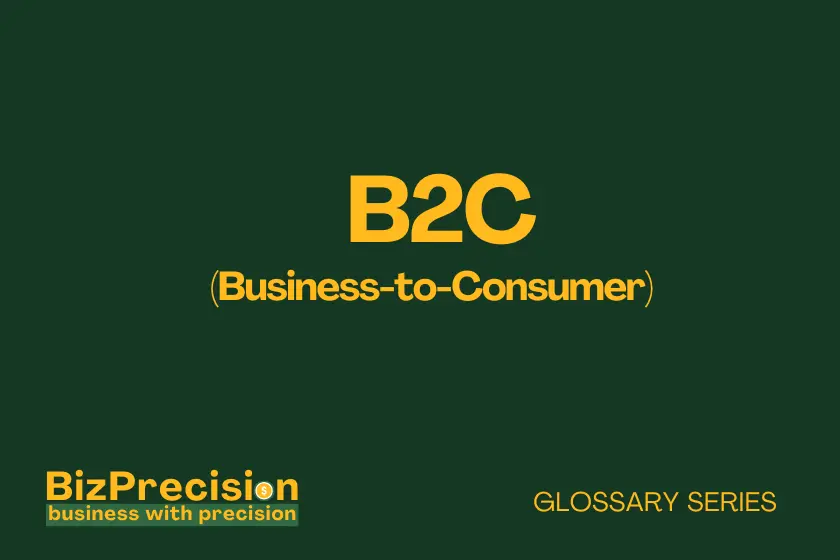What is B2C (Business-to-Consumer)?
B2C (Business-to-Consumer) refers to the business model where companies sell products or services directly to individual consumers for personal use.
B2C commerce forms the backbone of retail sales worldwide. Companies like Amazon and Walmart demonstrate how B2C shapes modern shopping habits. According to a recent McKinsey Digital Consumer Survey (2023), global B2C e-commerce sales reached $5.7 trillion in 2022, showing a 9.7% growth from the previous year.
Today, we’ll explore how B2C models work and why they matter for your business success.
Understanding B2C Business Models
Traditional B2C
The classic brick-and-mortar model remains vital in today’s retail landscape. Walk-in stores provide immediate gratification through direct product access. Target serves as a prime example, with 1,931 stores across the United States serving millions of customers daily.
Key elements of traditional B2C include:
- Physical Store Layout: Strategic product placement drives purchase decisions. Studies show that end-cap displays increase sales by up to 25%. These prominent positions catch customer attention and boost impulse purchases.
- In-Person Customer Service: Face-to-face interactions build trust and loyalty. Research by PwC reveals that 73% of customers value human interaction in their shopping experience. Well-trained staff members help solve problems quickly.
- Inventory Management: Real-time stock tracking prevents lost sales. Modern systems like RFID tracking reduce out-of-stock situations by 40%. This technology ensures products are available when customers want them.
E-commerce B2C
Online retail transforms how we shop. Amazon’s success shows the power of digital B2C, with over 300 million active customers worldwide.
Digital platforms offer unique advantages:
- Mobile Shopping: Apps make buying easy anywhere. Studies show that 79% of smartphone users made a purchase online in the last 6 months. Mobile optimization increases conversion rates significantly.
- Digital Payment Options: Various payment methods increase sales. Research indicates that offering multiple payment options can boost conversion rates by 30%. Digital wallets like PayPal and Apple Pay simplify transactions.
- Customer Data Analysis: Online tracking improves personalization. Companies using customer data see a 15-20% increase in sales. This information helps create targeted marketing campaigns.
Hybrid B2C Approaches
Modern retail combines online and offline experiences. Best Buy exemplifies this approach, offering both digital and in-store shopping options.
Success factors in hybrid models include:
- Channel Integration: Seamless switching between online and offline shopping matters. Research shows that companies with strong omnichannel engagement retain 89% of their customers. This integration provides convenience and flexibility.
- Click-and-Collect Services: Convenient pickup options save time. Studies indicate that 67% of shoppers have used buy-online-pick-up-in-store services. This option combines digital convenience with immediate product access.
- Unified Inventory Systems: Real-time stock updates across channels prevent errors. Companies using unified systems report 30% fewer stockouts. This accuracy improves customer satisfaction.
Key Components of Successful B2C Operations
Customer Experience Management
Creating positive shopping experiences drives loyalty. Research shows that companies focusing on customer experience increase revenue by 4-8% above market average.
Essential elements include:
- Personalization Tools: Tailored experiences boost sales. Studies show personalized recommendations increase conversion rates by 150%. Smart algorithms analyze shopping patterns to suggest relevant products.
- User Interface Design: Easy navigation increases sales. Research indicates that improved UI design can boost conversion rates by 200%. Clear layouts and simple checkout processes reduce cart abandonment.
- Feedback Systems: Customer input shapes improvements. Companies that act on feedback see a 25% increase in retention rates. Regular surveys and reviews provide valuable insights.
Marketing and Sales Strategies
Effective marketing drives B2C success. Digital channels now influence 67% of retail purchases.
Key strategies include:
- Social Media Engagement: Platform presence builds brand awareness. Companies active on social media see 32% higher sales growth. Regular posts and interaction increase customer connection.
- Email Marketing: Targeted campaigns drive sales. Personalized emails generate 6 times higher transaction rates. Segmented lists improve message relevance.
- Analytics Usage: Data drives decisions. Companies using advanced analytics report 15-20% higher marketing ROI. Tracking helps optimize campaign performance.
Supply Chain and Fulfillment
Efficient delivery systems matter more than ever. Fast shipping influences 63% of online purchase decisions.
Critical aspects include:
- Inventory Control: Stock management prevents losses. Companies with advanced systems reduce carrying costs by 25%. Automated reordering maintains optimal stock levels.
- Shipping Options: Delivery choices affect sales. Studies show that 66% of shoppers choose retailers offering multiple shipping speeds. Various price points meet different customer needs.
- Returns Processing: Easy returns build trust. Companies with customer-friendly return policies see 20% higher customer lifetime value. Clear processes reduce customer frustration.
B2C Best Practices and Innovation
Technology Integration
Modern tech shapes B2C success. Companies investing in technology see 40% higher revenue growth.
Important technologies include:
- AI Applications: Smart systems improve service. Chatbots handle 69% of customer conversations from start to finish. This automation provides 24/7 customer support efficiently.
- Mobile Solutions: Phone-friendly design matters. Studies show that mobile-optimized sites convert 160% more users. Responsive design ensures good experiences on all devices.
- Voice Commerce: Speech shopping grows rapidly. Research predicts voice shopping will reach $40 billion by 2024. Smart speakers make ordering more convenient.
Data Privacy and Security
Protection builds customer trust. Strong security measures increase purchase confidence by 50%.
Essential measures include:
- Encryption Tools: Secure data handling protects information. Companies using advanced encryption report 70% fewer breaches. Regular updates maintain strong protection.
- Compliance Systems: Following rules prevents problems. GDPR-compliant companies see 35% higher customer trust ratings. Clear policies explain data handling practices.
- Trust Signals: Security badges increase sales. Visible trust markers boost conversion rates by 42%. Third-party verification builds confidence.
Future Trends
Innovation drives B2C evolution. Understanding trends helps businesses prepare for change.
Emerging areas include:
- AR Shopping: Virtual try-ons increase confidence. Companies using AR see 40% lower return rates. This technology helps customers make better choices.
- Sustainable Commerce: Green practices matter more. Studies show 73% of millennials prefer eco-friendly brands. Environmental responsibility influences buying decisions.
- Social Commerce: Platform shopping grows fast. Instagram shopping features increase sales by 300%. Direct buying through social media simplifies purchasing.
Conclusion
B2C commerce continues to evolve and shape retail’s future. Success requires understanding both traditional and digital approaches. Smart technology use, strong customer focus, and adaptable strategies drive growth.
To succeed in B2C:
- Build strong online and offline presence
- Focus on customer experience
- Invest in technology and security
- Stay current with trends
Start improving your B2C strategy today. Your customers expect seamless experiences across all channels. Meet their needs by implementing these insights and best practices.







